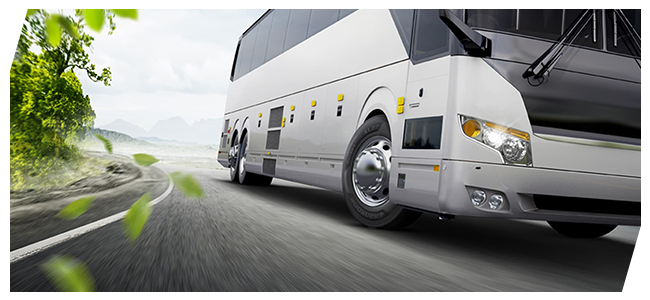How the right tires can improve fuel economy

With the price of fuel these days, organizations everywhere, from coach bus companies to long haul truckers, need to do everything they can to improve fuel economy. Factors like brake quality, keeping transmissions in good working order and maintaining tire pressure is important, but many operators overlook an important factor, namely, rolling resistance and choosing the right tire for the job.
By reducing the rolling resistance of the tires on your fleet, you can also reduce your overall fuel consumption. In fact, rolling resistance may be responsible for up to 30% of a truck or bus’s fuel consumption. It adds up fast.
So how do the right tires improve fuel economy? It all comes down to physics. Rolling resistance, which is to say the pressure a vehicle’s tires exert onto a road surface, actually works, via friction, against a truck or bus’s speed. That means, the lower the rolling resistance the easier it is for a vehicle to get up to speed and stay there.
Choosing the right tire
When looking for a tire to help improve fuel economy, the first job of any fleet supervisor is to consider the application and job function their vehicles will be used for. While most tires these days are designed for performance, a great tire being used in the wrong application may not achieve the results you’re looking for. With this in mind, it’s important to ensure that the tires you purchase are the right size, with an appropriate load range to handle a bus or rig’s gross axle weight rating.
In addition to size, tire design also factors into the equation. While many of the major trucking and bussing applications, like long haulers, regional haulers or local service vehicles fit a specific tire for each wheel position, some manufacturers, like Hankook, offer all-position tires, such as their Smart Work AM15 model, for use on any of a vehicle’s axles.
Tread and traction
Another important factor to help reduce rolling resistance, is to ensure your fleet’s tires don’t have too high of a tread profile. In the past (before fuel prices surged), tire treads and lug patterns with heavy traction were a top choice. However, these deep treads and lug patterns can have a significant impact on fuel economy. Companies like Hankook are leading the way with more optimized grooves that, while deep, are offset by extra-wide tread blocks that provide traction while cutting down on rolling resistance all the same.
Research, research and more research.
At the end of the day, when it comes to buying the right tires for your fleet, a little (or a lot) of research can go a long way. All tire manufacturers offer fuel-efficient tires for busses and trucks. Give yourself some time to thoroughly search the web for reviews, read industry publications, check studies and price comparisons and then make the choice that’s right for you.
In addition to ensuring you’ve got the right tires for the job, here are a few other ways to improve efficiency and keep fuel costs down, mile by mile.
Monitor tire pressure
Underinflated tires can negatively impact your fuel economy. For every 1 PSI drop in pressure, mileage may be reduced by 0.3%.
Maintain vehicle alignment
A tire that is even ¼ degree from perfectly straight will try to drift 2-3 metres sideways every kilometer travelled. Keep things rolling straight and watch your economy improve.
Minimize cruising speed
The faster you drive, the more fuel your fleet burns. At a speed of 120 km per hour, a vehicle uses about 20% more fuel than at 100 km per hour.
